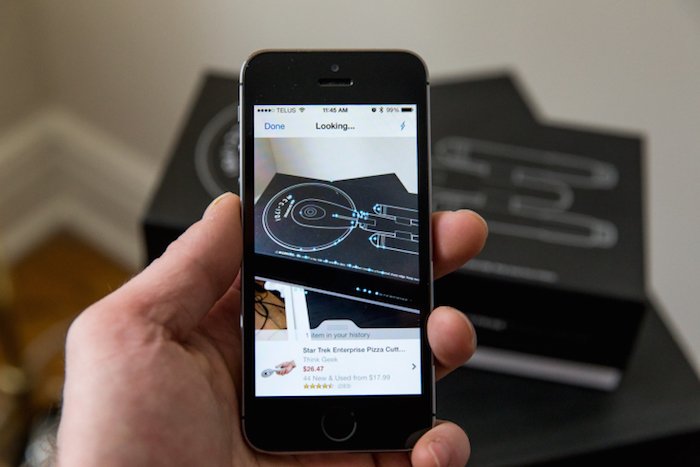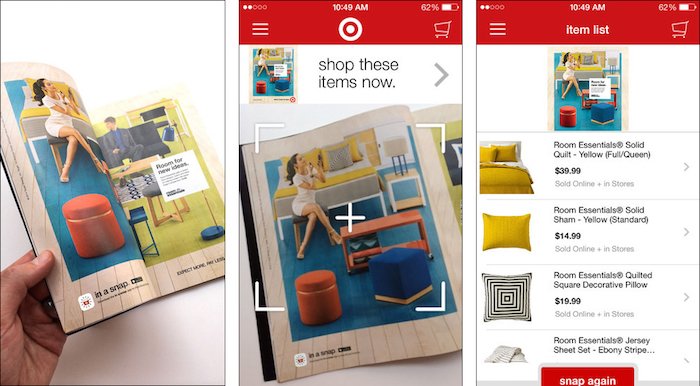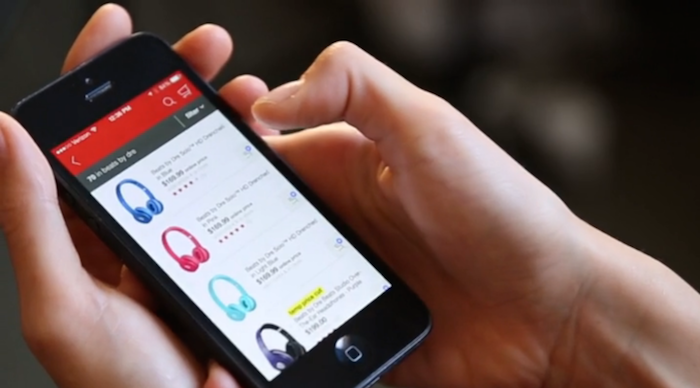Image Recognition Leads The Way to Purchase
Mobile image recognition technology is streamlining the path to purchase by allowing shoppers to “snap” their way to ownership. Smartphone cameras are being turned into more than just a way to capture a family photo or

Mobile image recognition technology is streamlining the path to purchase by allowing shoppers to “snap” their way to ownership.
Smartphone cameras are being turned into more than just a way to capture a family photo or something to upload to Instagram. When paired with image recognition technology, they are increasingly proving to be a powerful tool for mobile users to buy and sell. Intrepid shoppers can now snap photos or scan barcodes without much forethought, and in turn, identify potential purchases before proceeding to the checkout process.
By transforming any product interaction into a sales opportunity, a new wave of services are quickly expanding the notion of what mobile commerce can be. These new services are coming together in a trend we are calling ‘Snap-To-Buy’, which looks at how native cameras in mobile devices and image recognition technology are coming together to vastly streamline the path to purchase.

image credit: TinEye
Adding to this point, Nick De Toustain, Director of Sales at LTU Technologies, remarks, “There is no doubt image recognition will play a major role in m-commerce next year. We’ve reached that tipping point where enough consumers have the ‘scan reflex’ and nothing is more natural than scanning an image of the product…image recognition’s time has come.” Below are some of the most compelling examples of this Snap-To-Buy surge:
Target’s ‘In A Snap’ is an iOS application that implements image recognition as a means to shop for brand merchandise from the once-static magazine or print ad. Using their Apple device of choice, users scan printed materials to see if items featured on the page are available in Target’s inventory. With their availability comes an overlay of product information and a single-click gateway to a mobile cart for speedy processing. Or, from there, consumers can choose to save an item for later consideration. This new app is another example of Target’s “test-and-learn” approach to continue building omni-channel capabilities that meet the needs of today’s (and tomorrow’s) digital-savvy shoppers.
Snapup, by contrast, is a m-commerce app that aims to simplify shopping across a stream of platforms, apps, and web browsers. Users take screenshots of products they are interested in and Snapup automatically turns them into full shopping lists. Snapup users can then categorize products, create lists for different purposes, and share wishlists with other app users. Conveniently, its price tracking feature informs users when an item is on sale. When ready to complete a purchase, users can do so through a one-click purchasing interface.
Combining both app and producer scanner kit, Hiku makes it easier to create digital shopping lists that can be shared between devices and used for online purchases. The helpful hardware consists of two parts — a scanner and iOS app. The scanner is a small device that can be used to scan the barcodes of items in your pantry to add them to a shopping list.
Alternatively, users can use voice recognition technology to document the shopping list out loud. When done, the app creates a digital list that shoppers can access while at market, swiping items once secured to check them off. Each Hiku list is shareable with other people or devices, which makes it ideal for roommates, two-parent households, or partnerships. In the next product iteration, if users get to the store and an item is out of stock, they will soon be able to simply order it online through the app.
As with other shopping fads that preceded it, there’s the chance that Snap-To-Buy slumps if implemented wrongly. Chris Mellow of Grupo Gallegos warns, “If the scan-to-shop feature doesn’t add significant value, let alone function properly, customers will do the same thing that they’ve done with UPC and QR code scanning and just ignore it.” It’s important to note, however, that any qualms are targeted at proposed implementation and not the trend at large. An important distinction since it proposes that companies will hold the keys, and “snaps,” to their own digital destiny.
Via PSFK
 English
English








